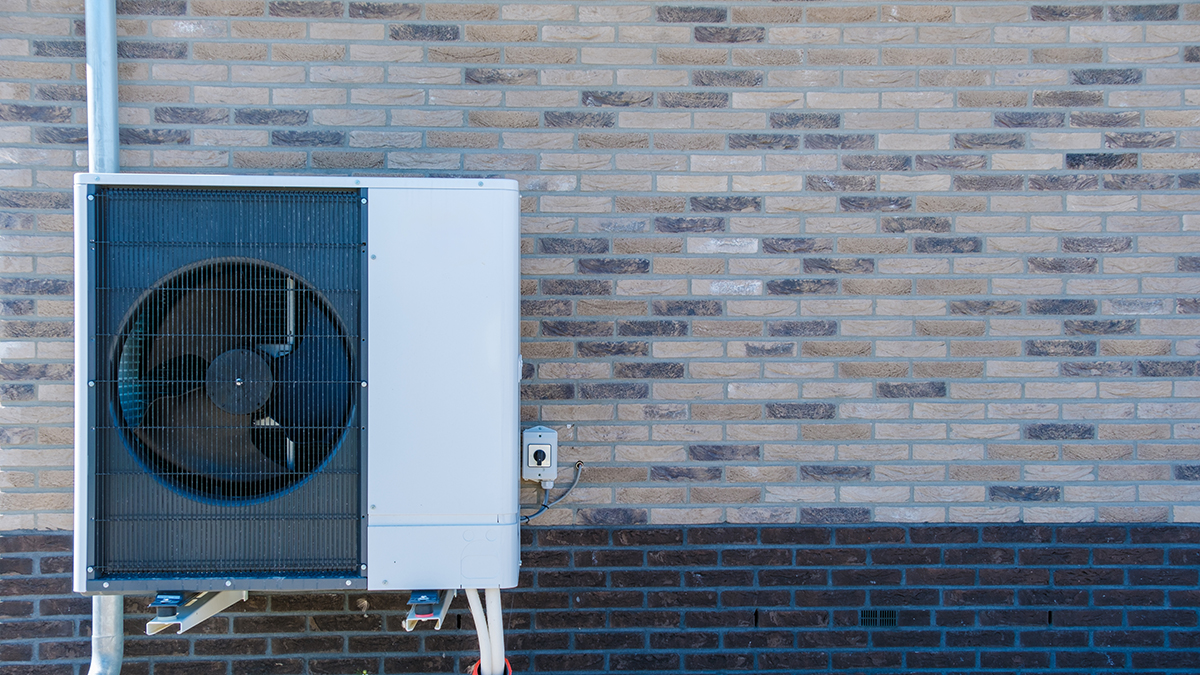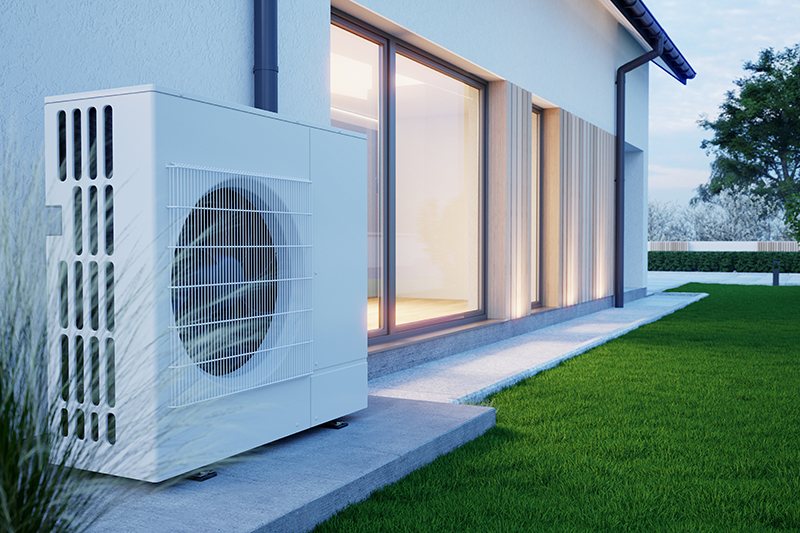Air-Source Heat Pumps: A Smart Solution for Low-Carbon Heating

Published: Monday, 04 August 2025
As we look towards alternative ways to reduce our carbon footprint in the UK as we try to achieve our net-zero goals. One technology that has been gaining traction within the past few years is Air Source Heat Pumps (ASHP). But what exactly is it? In this article we will look at what ASHPs are, how they work, and if they are right for your property.
What is an Air Source Heat Pump?
An ASHP provides efficient heating and cooling for your home. It is a renewable heating system that extracts heat from the outside air, even in temperatures as low as -15°C and uses it to heat your home and hot water. Similar to an air conditioner, except the cold air is pushed out and the warm air is sent in.
An air source heat pump can deliver up to four times more heat energy compared to the electrical energy it consumes, as it is transferring heat instead of converting it from a fuel.
There are 3 different types of ASHPs:
Air-to-water ASHPs - The heat is transferred into a ‘wet’ heating system that provides you with hot water.
Air-to-air ASHPs - These heat pumps move heat directly into the air in your rooms to heat up your space. Depending on the time of year, these can switch between heating and cooling; however, they do not provide hot water.
Hybrid ASHPs - Hybrid pumps are combined with boilers and can provide hot water or quick heating during sharp cold periods.
How Do ASHPs Compare to Traditional Heating Systems?
When compared to gas boilers and direct electric heating, ASHPs are very efficient. An ASHP can help to deliver up to four times more heat energy compared to the electrical energy it consumes, as it is transferring heat instead of converting it from a fuel.
Due to their lower carbon emissions, these are a great way to push your property forward when looking to go green.
Installation & Costs
Prices can vary depending on the following: how powerful it is, the brand, government grants, and installation costs. The upfront cost for an ASHP is higher than a standard gas boiler, but the long-term energy savings can help you save money in the long term.
You will likely see installation take around 2 to 5 days.
Benefits of Air Source Heat Pumps
ASHP offers a variety of benefits that can help make your decision on investment easier.
Renewable energy source - As the name suggests, the system uses air to help heal up your property, making it a renewable energy source, and helps you to heat your home in a green way.
Reduced carbon emissions - because of the technology being renewable, it will reduce your carbon emissions throughout the year.
Dual use - depending on the system you have, your ASHP will be able to also cool your home in the summer, giving you flexibility all year round.
Low maintenance - with annual servicing and filter cleaning, you can expect your systems to have around a 15–20-year lifespan.

Potential Drawbacks or Limitations
Like any system, ASHPs aren’t perfect for every home. Here are a few things to consider:
Expensive - although long-term savings will increase over time. The initial investment, even with grants, is high.
Performance - Sometimes the heat pumps can suffer from issues with performance during colder periods of the year; however, newer models aren’t affected as much during UK winters.
Property - ASHP performance is different on a property-by-property basis. For the best performance, make sure that your property is correctly insulated so you can retain the heat effectively.
Are They Suitable for My Property
For an ASHP to be its most effective, your property needs to be well-insulated. Home leaks through windows, walls, or roofs mean you lose the full benefits of the technology. The system is suitable for:
New builds
Renovated homes with upgraded insulation
Properties that are off the gas grid.
We recommend you get a professional assessment to determine if your home is suitable for ASHP.
Government Grants & Incentives (UK Specific)
The UK currently offers a Boiler Upgrade Scheme to help cover part of the cost to replace your fossil fuel heating system with either a heat pump system or a biomass boiler. To see if you are eligible, you can find out more information on the Gov.UK website here.
Environmental Impact & Role in Net Zero Goals
Heating overall contributes to over 30% of the total UK carbon emissions. Switching to a low-carbon technology like heat pumps is a great way to help bring that percentage down. Having an ASHP installed will help you not only save money in the long term, but you will also be contributing to a cleaner, greener future.
Common Misconceptions
❌ “They don’t work in cold weather” - Modern systems of ASHP are designed to work during UK winters.
❌ “They’re noisy” - Current units are no louder than a fridge.
❌ "They’re only for new builds” - Existing homes with the proper installation can also use ASHPs.
Smart Integration: Solar & Storage
With the growth of other systems such as solar PV panels and home battery storage, you can make your heating system nearly self-sufficient. The system will be able to use more electricity and rely less on the grid, helping to bring your energy bills and carbon footprint lower.
If you’re a homeowner looking to upgrade, air source heat pumps are well worth considering. With long-term savings, environmental benefits, and generous government incentives, there has never been a better time to switch to air source heat pumps.
If you’re interested in doing an ASHP training course, please register your interest at the link below:

